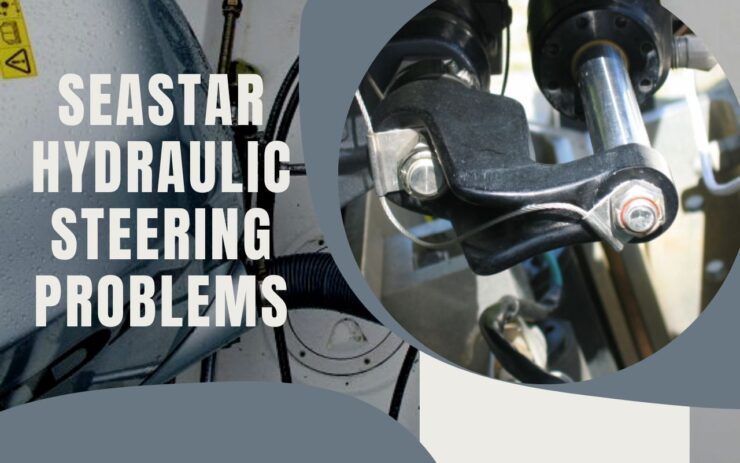If you’re a sailing enthusiast, chances are with time, you’ve favored help from the boat itself.
Maintaining the tiny details of steering is impossible on your own and can cause annoyance.
You might’ve heard of SeaStar’s Hydraulic steering rigs, and wondered if it’s worth the purchase.
So, what are some Sea Star Hydraulic steering problems you might encounter?
Hard steering or difficulty in control is the most prevalent. Fluid level, leaking and air-in-line issues are just a few common complaints.
But troubleshooting these issues is quick if you know where to look. They all start with the same symptom – difficulty in steering transmission.
If you need more details regarding these issues, we’ve got you covered. This piece gives you a stronger comprehension on all the matters involved.
Table of Contents
ToggleWhat is a SeaStar Hydraulic Steering System?
SeaStar Solutions is a global provider of recreational marine aftermarket products. They were formerly known as Teleflex Marine, before being acquired by Dometic Group in 2017.
The $875 million acquisition was because they were and still are the best in the market.
SeaStar has been at the helm of boat solutions for over 60 years.
Their use of automation in the steering for all kinds of marine vessels pioneered innovation. The hydraulic steering kit they came up with changed the game at the turn of the century.
The SeaStar Hydraulic steering system is by far the most reliable in the industry. It can handle outboard, stern board, and inline engines fairly easily.
It has different specialized control functions for each. The helm support found in these kits makes your life so much simpler on the water.
The kits come with a standard wheel, usually geared towards 350 horsepower and above. This means they are best suited for outboard engines.
If you have other engine types this will still work great, but with a few caveats.
The hydraulic steering assists in turning the steering wheel swiftly and precisely. But there are some hydraulic steering problems too, just like the Yamaha Penta fuel pump problems.
Let’s look at some of the problems that you may face in detail!
Problems You May Encounter with SeaStar Hydraulic Steering
We list here 3 of the most common issues faced by users and their symptoms.
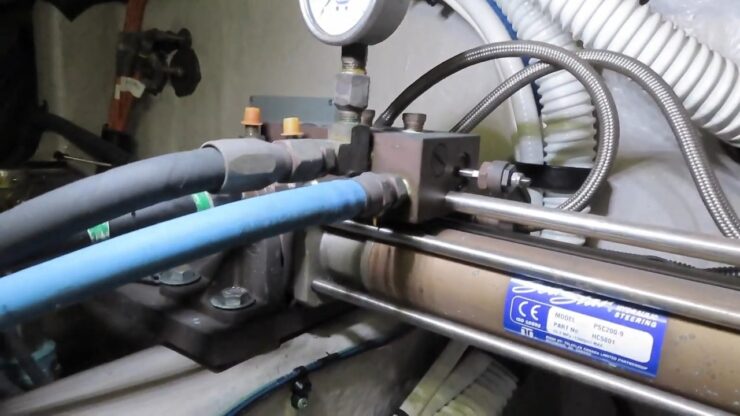
Problem 1: Hard Steering
This is by far the most common issue out of the bunch. If your steering has become continually harder to control, it’s a steering issue.
The symptoms of this are fairly simple. If you experience resistance at bends and in freshwater conditions, your steering has become difficult.
This is a fairly simple fix if you’re experienced, but it can also be a serious issue. If not resolved fairly immediately.
Problem 2: Leaking and Fluid Level Problems
There are often leaks around the helms of the boat and wheel board. This might be from the fluid filler tube overfilling. If the tube overheats it can also deform and form holes.
Checking the helm and the tubings behind the conn are a start. But you need a fairly trained eye to find it. We recommend you hire a professional or take your steering kit to one.
Hydraulic fluid levels dropping is usually an aftereffect of leaks mentioned above. This leads to direct steering resistance and stutter at even moderate speeds.
Problem 3: Air in Lines
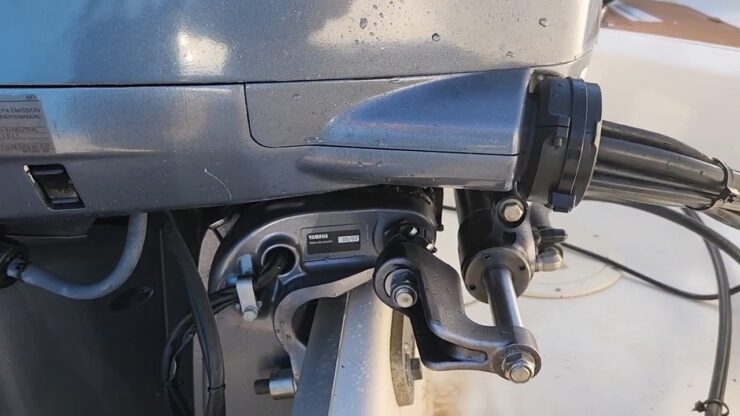
The diagnostic properties for this issue starts with slowed steering. Not resistance, but slowed transmission.
There might be hard feedback from the steering. As this prevents the air in the cylinders to become compressed.
As this affects combustion proportionately, it affects the rudder. The rudder may become unresponsive after a while due to faulty transmission.
If kept unchecked, with time it can be by far the most destructive of the problems. This can directly cause the steering to fail and become permanently unresponsive.
We talk in detail about how to troubleshoot these issues, read on!
Problem 4: Contaminated Fluid
This is the worst possible scenario you can experience with your SeaStar Hydraulic, but don’t worry, there is a solution!
First, check the steering fluid level and add more if needed. Next, flush the system with clean steering fluid. Don’t forget to bleed the system of air bubbles.
If you suspect that your steering fluid is contaminated, it’s important to take care of the problem as soon as possible.
Contaminated fluid can cause damage to your steering system, making it less effective and potentially putting you in danger while operating your vessel.
Fortunately, if you catch the problem early, it’s relatively easy to fix. Simply checking and topping off your steering fluid level is often all that’s needed.
If contamination is more severe, you may need to flush the system with fresh fluid and bleed the system of air bubbles.
By following these steps, you can fix a contaminated fluid problem with your SeaStar hydraulic steering and get back to enjoying safe and smooth operation of your boat.
Ways to Troubleshoot SeaStar’s Steering Problems
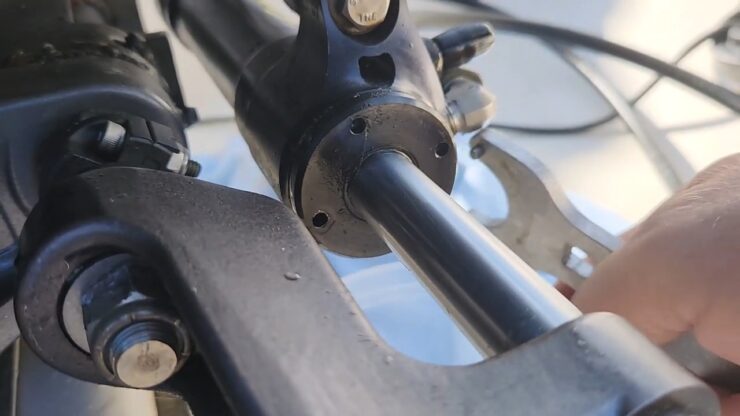
After you’ve successfully diagnosed the issues, follow along with these simple instructions to troubleshoot!
Hard Steering Solutions
You first check to see if your fluid reservoir is full. If it is not, the problem is elsewhere. But if it’s full without any air at the top of the tube, then follow this.
First, identify and remove the bolts at the engine tubings. Reattach them after cleaning and then turn on the engine. Check if the steering moves on its own when you apply force.
If you have an idea on lubing the steering cable on the boat, this will come in handy. You have to lubricate the couplings on the outboard motor.
Do this by hand. This should fix it, if it doesn’t then the issue might be in fluids.
Leaky Fluid Troubleshooting
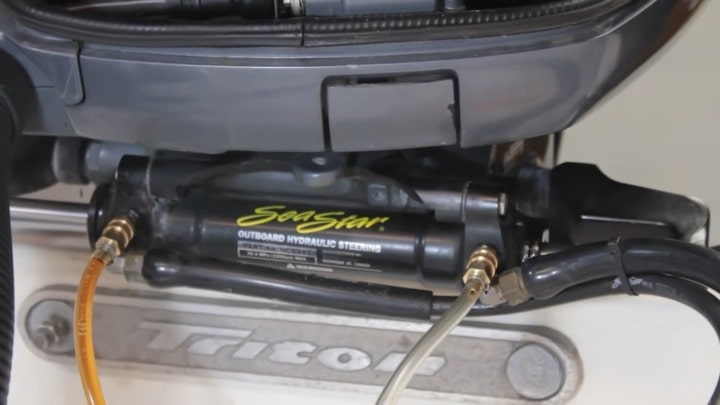
This is the only one you may not be able to solve on your own. That is unless you have a trained eye, but even then you can only diagnose the issue.
Take your kit and boat to the repair shop. Because they have the specialized tools to resolve fluid leakage. Add fluid in stages in the future to avoid overflow.
Maintain engine tubings to prevent overheating as debris builds up to cause this.
Air in Lines Troubleshooting
With it being the most worrisome issue, surely there needs to be DIY solutions, right? Yes, there are! Plenty in fact.
Firstly, after diagnosis, run a hose with the fluid-filled container. This is done at the highest point of the helm.
Take another hose and attach it to the reservoir to run the overflow into an empty container. After you have drained, turn the lock on the wheel from one to another.
This causes any leftover bubbles in the fluid to exit through the hoses. In no time the air is pushed out as you repeat! Reseal the cylinders after you’re certain the air is out.
FAQs
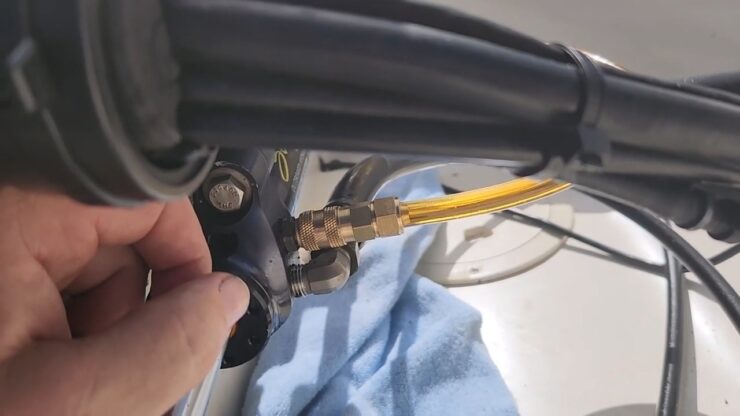
How do you fill a SeaStar hydraulic steering wheel?
Filling a hydraulic steering wheel is simple. Start by threading a filler tube into the helm pump. Thread the fluid container onto the filler tube by poking a hole at the bottom.
Turn upside down and pour while steering to the port side. Using standard hydraulic steering fluid by SeaStar is better.
Why is my SeaStar steering hard?
Steering on SeaStars can be difficult due to resistance in the wheel. Resistance can result from the wing nut being screwed in too tight.
But if the wing nut is not the issue it can be the steering ram. Maybe even shaft corrosion in the engine. Getting it checked professionally is the best option.
How much do SeaStar’s hydraulic steering kits cost?
The steering kits can cost anywhere between $1600 to $2300 depending on where you live. Another factor is shipping costs which can add to it greatly.
As these items are not duty-free in most countries. But buying them online usually is the cheaper option.
Final Words
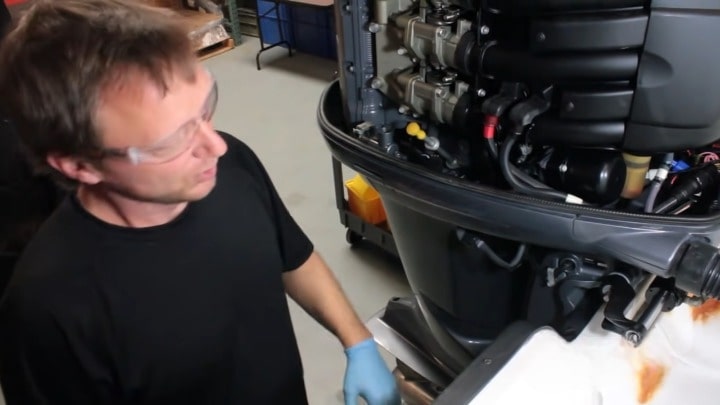
We hope by now you have a better idea of some of SeaStar’s Hydraulic steering problems.
There are always drawbacks that come with an overall great automated steering system for boats. As all things do.
But the ease of troubleshooting these issues for the SeaStar makes it stand out from the crowd. As always, regular upkeep foregoes the need to fix some of the maintenance issues.
Thank you for reading and come back for more steering queries!
I’m Liam Jackson, the proud owner and driving force behind KayakPaddling.net. Born somewhere in the expansive beauty of the United States, I’ve nurtured a lifelong passion for kayaking and fishing that has led me to explore the far corners of our nation’s waterways.
Related Posts:
- 15 Best Baitcasting Reel Under $100 2024 - Improve…
- 16 Best Kayak For Beginners 2024 - Kayaking Adventure Gear
- 17 Best Trolling Reels 2024 - Enjoy your Fishing Adventure
- Heavy Duty Fishing: 11 Best Rods And Reels For Big Fish 2024
- 12 Best Beach Wagons & Carts 2024 - For All-Terrain
- 10 Best Power Tilt and Trim Fluid Alternative 2024 -…

